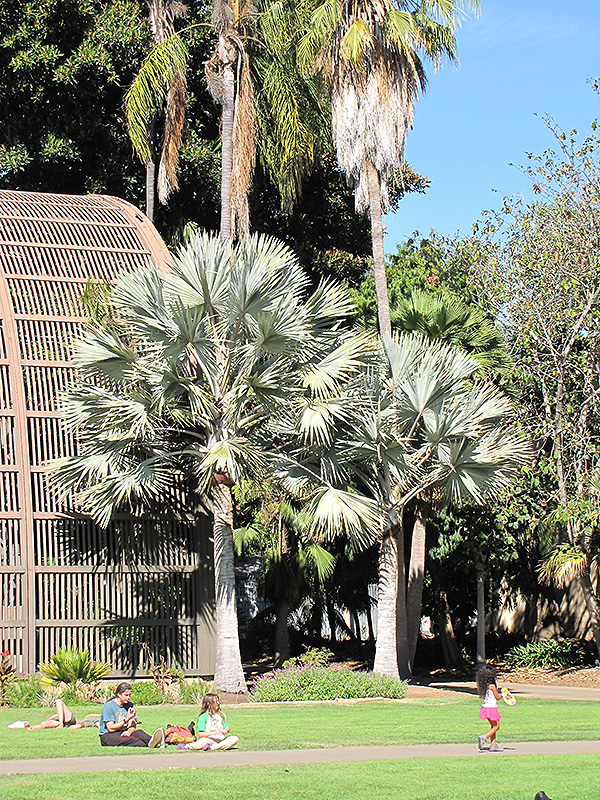Bismarck Palm (tree form)
Bismarckia nobilis (tree form)
Height: 40 feet
Spread: 20 feet
Sunlight:
![]()
Hardiness Zone: 9a
Description:
A striking palm that eventually can become quite large; huge, fan like leaves of silvery blue-green emerge from solitary trunks; highly tolerant of intense inland heat, but also does well in coastal areas; an outstanding landscape accent
Ornamental Features
Bismarck Palm (tree form) has attractive bluish-green foliage with hints of silvery blue on a tree with the bulk of the canopy held atop a towering trunk or stem. The enormous palmate leaves are highly ornamental and remain bluish-green throughout the winter. However, the fruit can be messy in the landscape and may require occasional clean-up. The rough tan bark is extremely showy and adds significant winter interest.
Landscape Attributes
Bismarck Palm (tree form) is an evergreen tropical plant with a strong central leader and a towering form, with a high canopy of foliage concentrated at the top of the plant. Its average texture blends into the landscape, but can be balanced by one or two finer or coarser trees or shrubs for an effective composition.
This tropical plant will require occasional maintenance and upkeep, and should not require much pruning, except when necessary, such as to remove dieback. It is a good choice for attracting birds to your yard. It has no significant negative characteristics.
Bismarck Palm (tree form) is recommended for the following landscape applications;
- Accent
- Vertical Accent
Planting & Growing
Bismarck Palm (tree form) will grow to be about 40 feet tall at maturity, with a spread of 20 feet. It has a high canopy of foliage that sits well above the ground, and should not be planted underneath power lines. As it matures, the lower branches of this tree can be strategically removed to create a high enough canopy to support unobstructed human traffic underneath. It grows at a slow rate, and under ideal conditions can be expected to live for 80 years or more.
This tropical plant should only be grown in full sunlight. It is very adaptable to both dry and moist locations, and should do just fine under average home landscape conditions. It is considered to be drought-tolerant, and thus makes an ideal choice for xeriscaping or the moisture-conserving landscape. It is not particular as to soil type or pH. It is somewhat tolerant of urban pollution. This species is not originally from North America.




